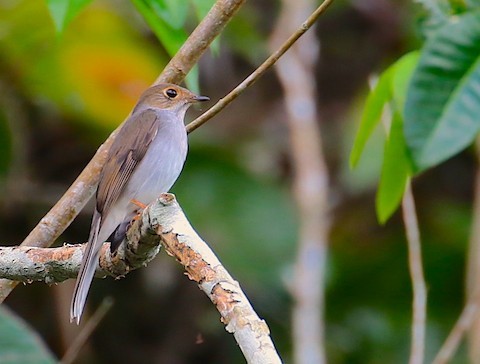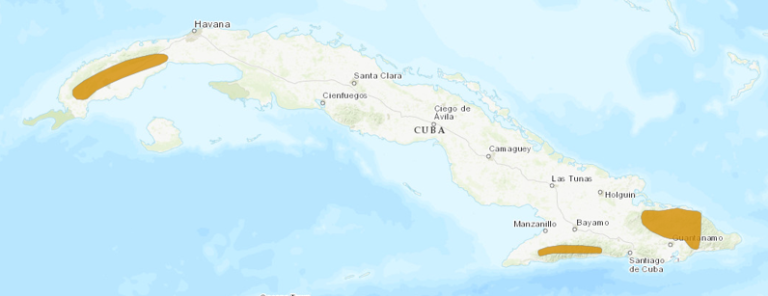Birdfinding.info ⇒ Locally common in its limited range. In the western mountains, it can be heard at all of the sites frequented by visitors, but is most reliably seen at Cueva de los Portales in La Güira National Park and several locations in the Viñales area including Sendero Maravillas, Rancho San Vicente, and Dos Hermanas. Most of its range in eastern Cuba is difficult to access. Reliable sites there include Pico Turquino in the Sierra Maestra, Salto del Guayabo in La Mensura National Park, and Sendero El Recreo in Alejandro de Humboldt National Park.
Cuban Solitaire
Myadestes elisabeth
Endemic to Cuba, where it inhabits humid mountain and foothill forests of the far west and far east.
In the west, it occurs mainly in the mountains of Pinar del Río and Artemisa, and has recently been discovered in the hills southeast of Havana at Escaleras de Jaruco.
In the east, there are populations in the Sierra Maestra and the mountains of Holguín, Santiago de Cuba, and Guantánamo Provinces.
Extirpated from the Isle of Youth around 1930.
Identification
Plainly attired overall, with neutral brown upperparts and grayish-white underparts. Its most distinctive features are orange legs and dark eyes that seem disproportionately large, framed by prominent buffy eyerings.
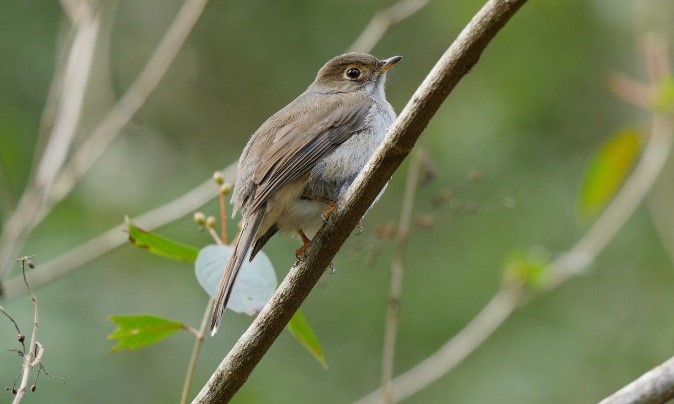
Cuban Solitaire, appearing typically plain overall. (Rancho San Vicente, Ancón, Pinar del Río, Cuba; January 14, 2017.) © Greg Baker
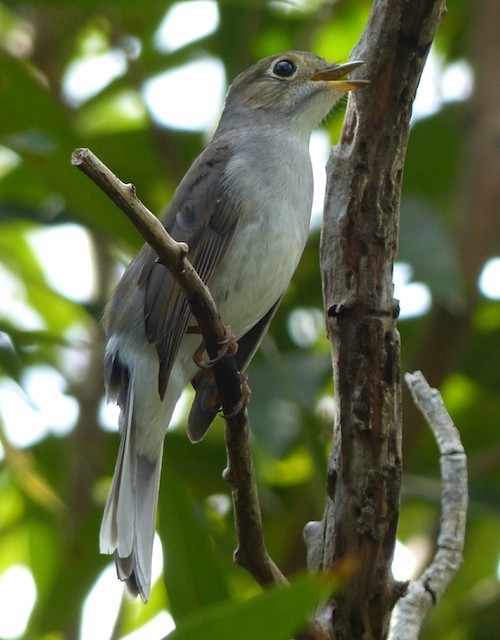
Cuban Solitaire, singing and showing orange on lower mandible. (La Güira National Park, Cuba; January 7, 2015.) © Alain Sylvain
The lores are buffy and the cheeks are vaguely streaked with buffy or rusty brown. The bill appears dark when closed, but the lower mandible is orange at its base, which can be conspicuous when it sings.
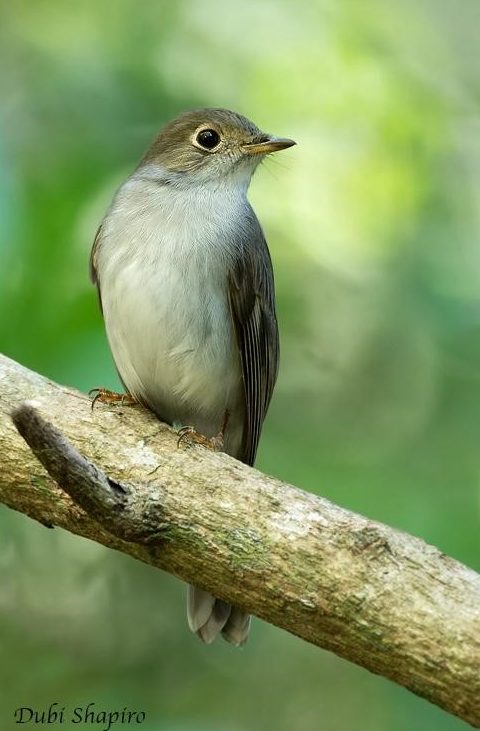
Cuban Solitaire, showing buffy facial markings. (La Güira National Park, Cuba; November 16, 2014.) © Dubi Shapiro
The throat sometimes appears whiter than the chest, and it sometimes shows a dark whisker mark.
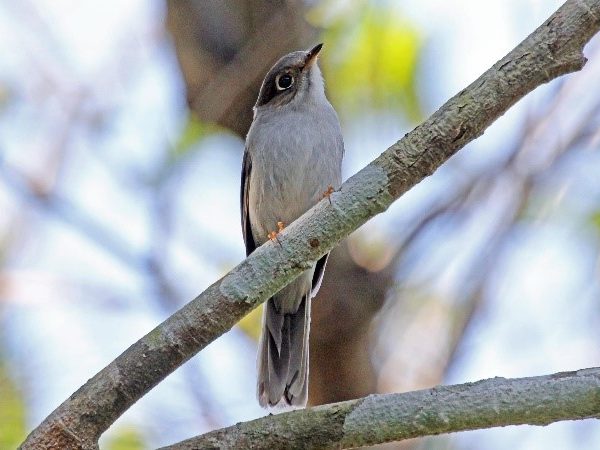
Cuban Solitaire, showing dark whisker mark and white throat. (Valle de Viñales, Pinar del Río, Cuba; April 3, 2014.) © Greg Griffith
Has subtle rusty highlights in the wings, and white outer tail feathers that are noticeable mainly in flight.
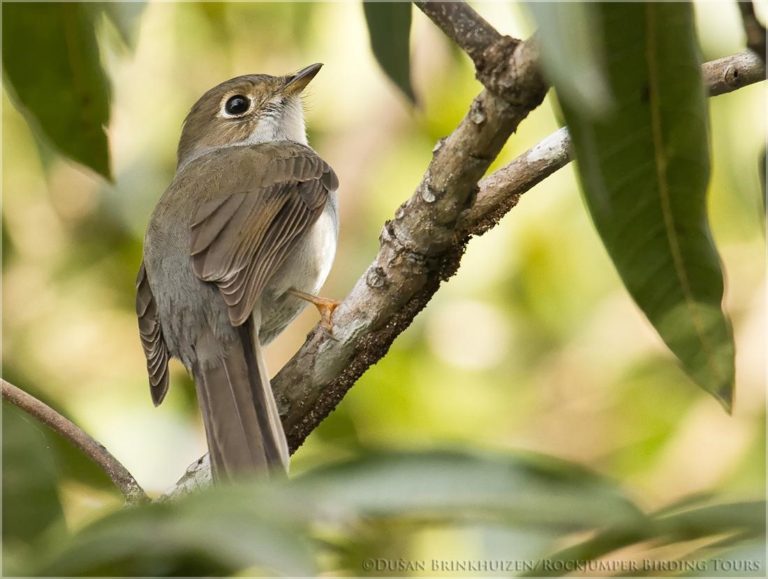
Cuban Solitaire, showing white outer tail feathers. (La Güira National Park, Cuba; January 30, 2016.) © Dušan M. Brinkhuizen
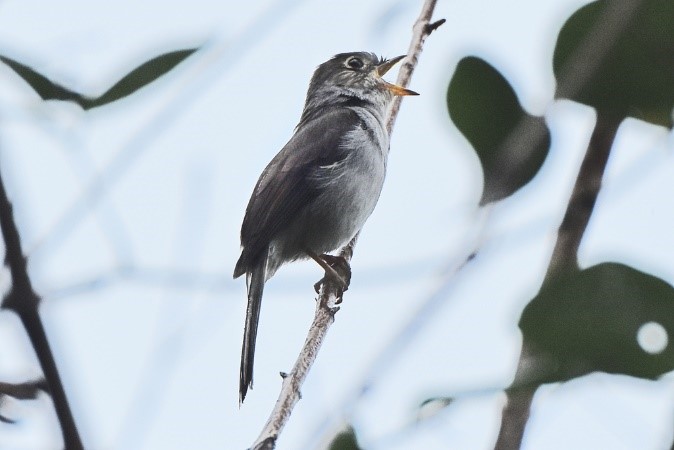
Cuban Solitaire, in full song, showing orange lower mandible. (La Güira National Park, Cuba; April 22, 2017.) © Dave Wendelken
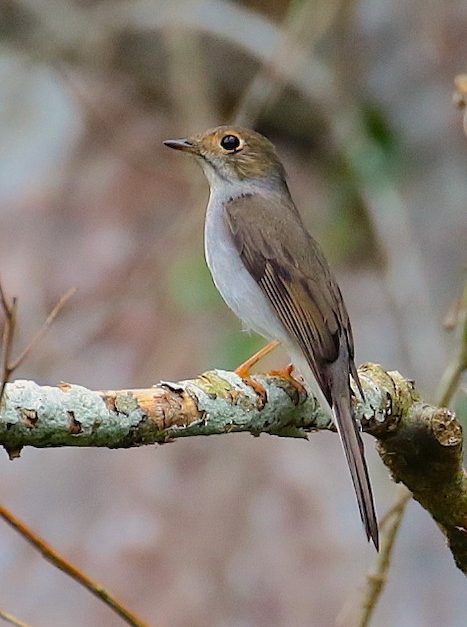
Cuban Solitaire, showing buffy facial markings, orange legs, and rusty highlights in the wings. (Cueva de los Portales, La Güira National Park, Cuba; February 22, 2018.) © Arco Huang
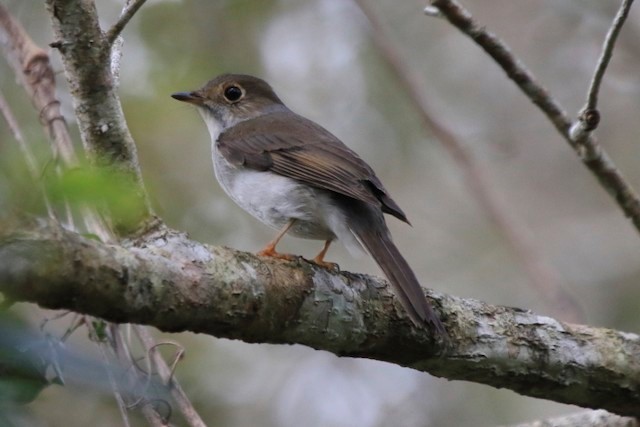
Cuban Solitaire, showing rusty highlights in wings. (Sendero Murmurios del Río, Pinar del Río, Cuba; December 23, 2017.) © Fabio Olmos
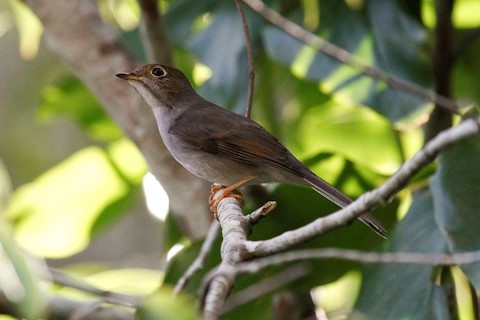
Cuban Solitaire, showing orange legs and rusty highlights on wings. (Hacienda Cortina, Pinar del Río, Cuba; February 21, 2015.) © Peter Kennerley
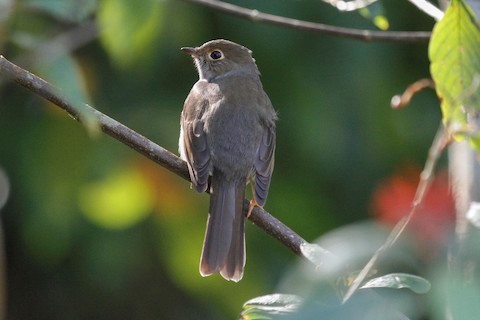
Cuban Solitaire, dorsal view. (Hacienda Cortina, Pinar del Río, Cuba; February 21, 2015.) © Peter Kennerley
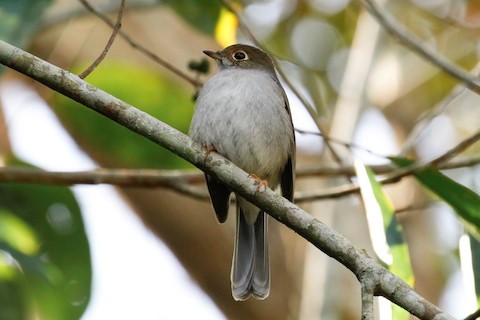
Cuban Solitaire, ventral view. (Hacienda Cortina, Pinar del Río, Cuba; February 21, 2015.) © Peter Kennerley
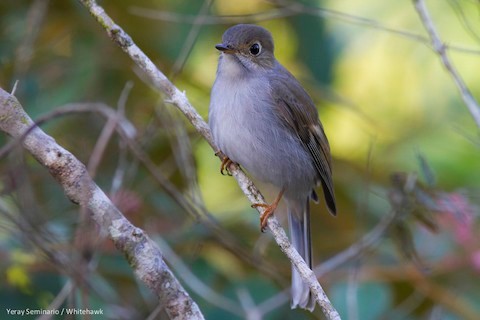
Cuban Solitaire, showing dark whisker mark and white throat. (Sendero Maravillas, Viñales National Park, Cuba; January 10, 2017.) © Yeray Seminario
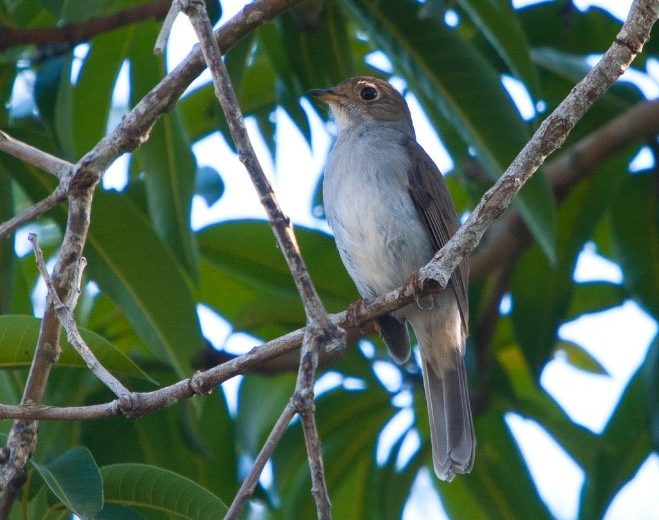
Cuban Solitaire, showing white throat and orange lower mandible. (El Pinar, Pinar del Río, Cuba; February 14, 2017.) © Colin D. Jones
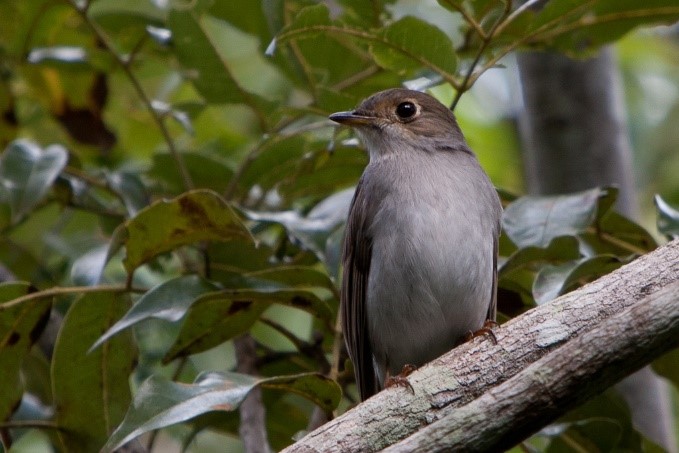
Cuban Solitaire, appearing plain. (Pinar del Río, Cuba; February 10, 2016.) © Colin D. Jones
Notes
Monotypic species. A second recognized subspecies that was confined to the Isle of Youth went extinct around 1930.
IUCN Red List Status: Near Threatened.
References
BirdLife International 2016. Myadestes elisabeth. The IUCN Red List of Threatened Species 2016: e.T22708593A94167009. http://dx.doi.org/10.2305/IUCN.UK.2016-3.RLTS.T22708593A94167009.en. (Accessed August 27, 2019.)
Collar, N., and C.J. Sharpe. 2019. Cuban Solitaire (Myadestes elisabeth). In Handbook of the Birds of the World Alive (J. del Hoyo, A. Elliott, J. Sargatal, D.A. Christie, and E. de Juana, eds.). Lynx Edicions, Barcelona. https://www.hbw.com/node/58238. (Accessed August 27, 2019.)
eBird. 2019. eBird: An online database of bird distribution and abundance. Cornell Lab of Ornithology, Ithaca, N.Y. http://www.ebird.org. (Accessed August 27, 2019.)
Garrido, O.H, and A. Kirkconnell. 2000. Field Guide to the Birds of Cuba. Cornell University Press, Ithaca, N.Y.
Navarro, N. 2015. Field Guide to the Endemic Birds of Cuba. Ediciones Nuevos Mundos, St. Augustine, Florida.
Raffaele, H., J. Wiley, O. Garrido, A. Keith, and J. Raffaele. 1998. A Guide to the Birds of the West Indies. Princeton University Press, Princeton, N.J.
